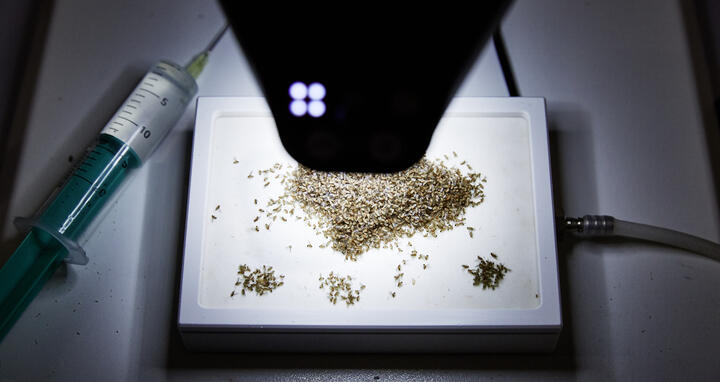What flies and humans have in common
It is one of the biggest mysteries of early human development. When, after conception of new life, cell division begins, all cells are initially identical. But then – after only a few hours – a small miracle occurs. Each cell assumes specialized functions and pursues its own purpose. One becomes a skin cell, another a brain cell, and still another part of a muscle or the nervous system. But how do cells know what to do? How does nature cause cells to develop into different types of tissue, and then integrate these to form a functioning organism? These are questions that the developmental biologist Robert Zinzen and his team at the MDC’s Berlin Institute for Medical Systems Biology (BIMSB) are investigating.
During the Long Night of the Sciences, they will be offering interested visitors tours of their lab in the MDC’s new building in Berlin-Mitte, where the scientists are breeding hundreds of thousands of flies of the species Drosophila melanogaster. Most people find these small insects to be annoying, especially in the summer when they buzz around fruit in the kitchen and multiply very rapidly. But for developmental biologists they are a veritable treasure trove of knowledge. They study the flies’ eggs to better understand early embryonic development. “From an evolutionary perspective, there is of course a huge gap between flies and humans” says Zinzen. “And yet there are still basic processes at work in both that function according to the same mechanisms.” Who would have thought that such tiny flies could have so much in common with humans? And the fact that the genome of these insects consists of only four chromosome pairs has made it a popular model organism among researchers from around the world.
Fruit fly embryos under the microscope
Scientists in the Zinzen lab work with flies.
Zinzen enters a laboratory that has a yellow sign next to the door that reads, “Genetic Engineering Workspace.” There are microscopes on the tables to the left and right, and above these are shelves containing boxes with tubes in which one can see living fruit flies and their eggs on a nutrient solution. Each box belongs to a different project, and each of these projects is being carried out by one of the ten members of the Systems Biology of Neural Tissue Differentiation group. “We are mainly interested in the nervous system, which consists of a particularly large number of different cell types,” says Zinzen. The team is studying how during embryonic development these cells communicate with one another and organize among themselves to form the highly complex nervous system. “Visitors to the Long Night of the Sciences who stop by our lab will learn about gene regulation and can themselves inject and examine fruit fly embryos under the microscope,” says Zinzen.
The switching on and off of certain genes leads to the formation of different cell types. This results, for example, in different sections of the DNA being active or blocked in the genome of a neuron or of a skin cell. Zinzen and his team want to understand the molecular mechanisms that tell cells which genes they should and shouldn’t transcribe. The researchers can visualize the gene expression in individual cells on the computer screen, where they have an extremely magnified view of embryos that are only a few hours old. The structure of the head and the epidermis can already be seen. The cells in which a specific gene is activated fluoresce brightly. “Here, visitors to the Long Night of the Sciences can watch gene regulation in progress,” says Zinzen.
Text: Alice Ahlers






